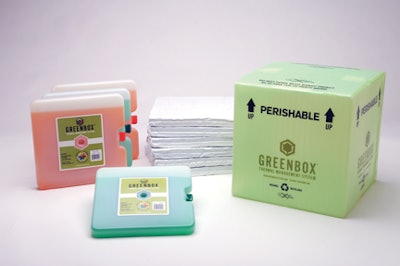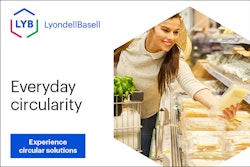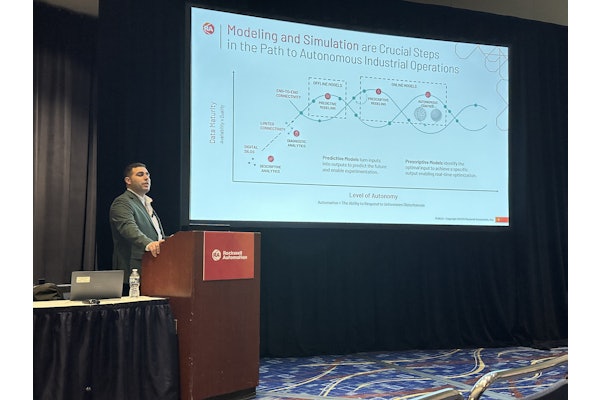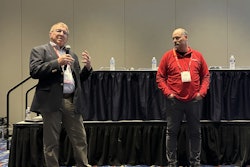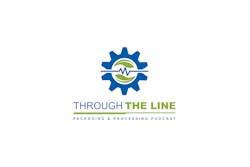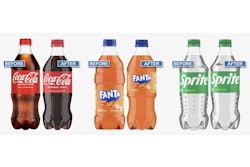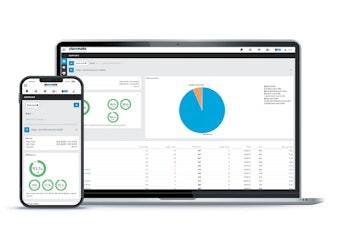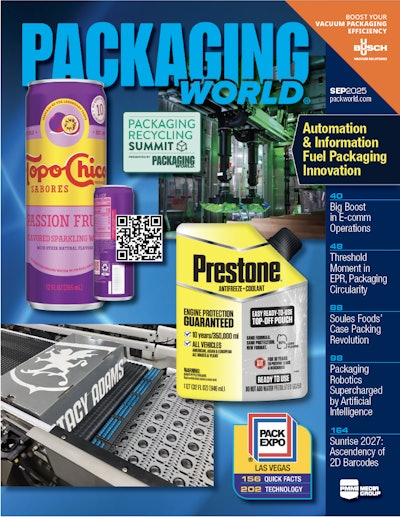Reusable shipper prevents unwanted product temperature swings
Entropy Solutions, Inc. earned DuPont’s Diamond winner with its Greenbox temperature-sensitive shipper, developed to maintain and control the temperature of vaccines, blood, and biologic-based products during transit.
The Greenbox system includes a plastic, corrugated outer skin, Thermal-Lok hyper insulation panels, and PureTemp™ PCM (phase-change material) panels. The outer container is injection-molded of high-density polyethylene.
PureTemp is a patented, proprietary formulation of renewable plant-based phase-change materials used to maintain and control temperature. It can continually regulate the temperature of a product or structure using the surrounding ambient energy. PCMs are compounds that liquefy and solidify at specific temperatures. During the process of liquefying and solidifying within a set temperature range, PCMs absorb, store, and release large amounts of energy. These natural properties of latent heat energy help maintain a product’s or structure’s temperature and buffer it from temperature swings.
Entropy Solutions’ President Eric Lindquist believes there are several mistakes companies make that lead to temperature-related product losses. They include:
• Product shipped in inferior thermal packaging, and the product is compromised. In the case of many vaccines, the product experiences a “thermal shock” after coming into direct contact with ice-based gel packs.
• Delays happen in transit. Lindquist says he has yet to see a figure for compromised product due to the recent volcano incident in Europe, however he believes it will be significant. Companies have a thermal shipper that may or may not be qualified, which then experiences delay—a missed connection, no available space, dry ice restrictions, etc.—so the product then goes out of acceptable temperature range.
• Mispacks. Most often the decision on how many packs to use is made by the packer at time of packing. If the product is packed in New Jersey in February, and is destined for Phoenix, the packer must decide whether to use an amount of gel packs that is right for New Jersey or an amount right for Phoenix.
• Improper equilibration. To avoid the “thermal shock syndrome” that is mentioned above, products that are prepared in a freezer—both water/ice-based gels and 5°C paraffins—need time to equilibrate before packing. This means that the coolants need to sit out between 15 to 30 minutes before they are to be packed.
The Greenbox system is touted as reusable. How frequently end-user companies reuse them varies by customer and is dependent on the mode by which they are transported.
How many times must they be reused to be economically advantageous compared with more common thermal shipping products? Lindquist points out, “The price range for qualified systems is from $18 [for a 24-hour version] to $380 [for a 72-hour version].” He advises users to look at the following factors:
• Cost per use: A typical validated “one-and-done” package with conventional components costs around $28, which is also cost per use. Packages using the advanced PCMs such as the Greenbox combined with durable carton materials cost around $109, but can be reused more than 50 times.
• Outbound freight cost: Because of the lower number of components in a package with advanced PCMs (specifically, the need not to insulate between the PCM and the payload), freight cost is lower.
• Packing time: Many traditional convection-based shipping systems have more than 18 packing steps and take approximately two minutes to pack. Greenbox systems use six steps and are packed in an average of 28 seconds.
• Warehouse expense: A characteristic of most conventional temperature-controlled packages is that many different dimensions are necessary to account for any change in mass or volume. Greenbox does not require a comparable variety of components and has smaller overall dimensions.
New technology poises beverage ‘bottle can’ for mainstream use
A multifaceted, game-changing technology for aluminum bottles has been aptly named a Diamond award winner for Excellence in Innovation, Cost/Waste Reduction, and Sustainability. New Coil-to-Can (C2C) technology from Exal Corp. and Alcoa Rigid Packaging allows for the manufacture of eye-catching, resealable, shaped aluminum bottles at substantially higher line speeds and with 30% to 40% less weight than previously achievable, making them a viable option for higher-volume beverage applications.
“The marketing world loves the aluminum bottle,” says Ed Martin, business development manager for bottle manufacturer Exal. “A lot of people like what you can do graphically, as well as with shaping. But from the standpoint of cost and sustainability, there are some challenges to the bottles because of the way they have been made using impact extrusion.”
C2C is a hybrid technology developed by Exal through an investment of eight years and many millions of dollars that combines the speed of traditional canmaking with the shaping abilities of the aluminum-bottle impact extrusion [IE] process. For enhanced sustainability, C2C also allows the bottles to be made from up to 65% post-consumer recycled aluminum alloy, compared with the 99.7% pure virgin aluminum required for IE. Alcoa supplies the raw-material aluminum coil used to make the container.
Among the markets in which Exal sees the greatest potential for C2C packaging are wine, functional or wellness beverages, water, carbonated soft drinks, and beer. Early adapters include Eska Vives Water, Inc., with its Eska still and sparkling water varieties, and The Coca-Cola Co., which launched an 8.5-oz custom C2C bottle in fall 2009 for its Coca-Cola classic, Coke Zero, and Diet Coke brands.
C2C combines traditional drawn and wall-ironed (DWI) canmaking technology on the front end with IE shaping capabilities on the back end, using a custom-designed 32-station, double-turret continuous necking machine from Frattini S.p.A. The necking machine, commissioned by Exal expressly for C2C, is engineered to handle the less-malleable materials used for DWI cans at speeds up to 3,000 bottles/min—a significant increase in speed from the 200 bottles/min produced with traditional IE technology.
Exal is optimistic about the potential for the new technology. Says Martin, “The future is largely C2C. In terms of dollars and units, it’s going to be largely the coil-to-can type containers that will drive the aluminum beverage-bottle market.”
Two-in-one prefilled vial design provides innovation
DuPont awarded Gold to Taiwan-based Degill Intl. Corp. for its EZ Fusion™ vial dispenser. EZ Fusion contains the following components: top and bottom chambers made of polypropylene, from Lee Chang Yung Chemical Industry Corp. ; an insulating spacer from ExxonMobil Chemical; and a stopper and tin cap from West.
DuPont notes, “Counterfeiting of ethical pharmaceuticals is a tremendous problem, particularly in some parts of the world. The innovative tamper-evident design of new EZ Fusion two-in-one vials enables consumers to easily determine authenticity of the product. It also takes the guesswork out of mixing drugs, so there is less waste. There is less chance of contamination, and it provides a cost-effective solution versus traditional glass vials.”
EZ Fusion was just launched at Interphex New York in April, according to Jennie Lu, who is responsible for Degill’s EZ Fusion business development. She describes the product as a multi-chamber vial dispenser, which provides a closure solution for filling and separately packing the medication and water for injection, or for the compound injection packaging in a sterile vial. “The mixture forms with a simple twist after removing the safety ring and flip-flopping the insulation spacer, then gently shaking the vial prior to usage,” she explains.
Asked about the product’s uniqueness, Lu responds: “Syringes and vials, still the workhorse delivery technology for injectables, are expected to continue to lead unit demand among parenterals, as a large percentage of existing and forthcoming injectable drugs are produced in lyophilized or dry powder formulations not easily adaptable to syringe packaging.”
Lu contends that the product is more cost-effective and affordable than prefilled syringes and can achieve the same benefits. EZ Fusion’s tamper-evident design aims to help reduce counterfeiting, while permitting a lean packaging process and offering users convenient self-administration of a medication.
Lu says that EZ Fusion is now commercially available to the pharmaceutical sector, and will be marketed in Asia and in Europe this year. “It takes a long period for pharmaceutical firms to validate a new packing material,” she says, adding that plastic applications are the trend in parenteral delivery design. “Innovation of parenteral packaging is rising in its importance, especially with the rise of biotech drug products and [as companies] consider their product quality control by including the final packaging design,” she adds.
Frito-Lay invests in the potential of composting with SunChips bag
Once the chips are eaten, the last tangible evidence of the SunChips multigrain snack-chip product is the bag. Now the bag has become a tool to “empower people” to make a difference in the environment. That’s according to Ashley Leidolf, engineer, packaging sustainability and advanced materials research, Frito-Lay Research and Development, who spoke on a panel discussion at Ingeo’s April Innovation Takes Root conference (see story on p. 25). The new 100%-compostable SunChips bag from Frito-Lay, a business unit of PepsiCo, is the winner of a DuPont Gold award for Innovation and Sustainability/Innovation and Cost/Waste Reduction.
Launched on the eve of Earth Day 2010, the multilayer SunChips bag is the fulfillment of a promise made by Frito-Lay last year to turn its then revolutionary one-third renewable-content bag into one made completely from NatureWorks’ Ingeo™ polylactic acid. The “one-third” bag, as it was known, was constructed of an outer layer of PLA, supplied by SKC of Korea and converted by Bryce Corp., coupled with a traditional sealant layer and a standard oriented polypropylene inner layer.
At the time, senior product development manager Michael Owen of Bryce told Packaging World: “The challenges that loom in developing a 100%-compostable bag are incorporating proper moisture, flavor, and oxygen barriers into the flexible packaging material to adequately protect the product through the distribution cycle. Still under development are the inner barrier layer and the middle tie layer.”
Bryce, along with barrier film supplier Toray Plastics (America), Inc. obviously met those challenges, producing a 90% renewable-content pillow-pouch bag that is said to fully compost in 14 weeks in a hot, active compost—claims approved by the Biodegradable Products Institute.
With the exception of its matte finish, chosen to draw attention to the bag’s uniqueness, and bold copy that proclaims, “World’s First 100% Compostable Chip Package,” the bag is visibly no different than those made from petroleum-based resins. What is different is the noise it makes. According to Frito-Lay Canada, the compostable package has a different sound than traditional bags because the plant-based materials are not as soft at room temperature, leading the Canadian company to market it as “The new sound of green.”
Along with the bag introduction, Frito-Lay has launched a national campaign along with the U.S. Composting Council and Earth911.com to promote composting through educational materials, consumer outreach, and other awareness-building activities. The goal is to reach more than 1 million American households directly through this effort.
“We have taken on this bag as an investment,” said Walsh, adding that with the launch of the bag, Frito-Lay hopes to spur the greater practice of composting—both home and industrial. “If consumers find home composting difficult, they may start questioning why their municipalities do not have composting infrastructures.”
Packaging revamp reduces materials and warehousing and energy requirements
Procter & Gamble, Cincinnati, has earned a Gold Award from DuPont for revisiting its approach to flexible film packaging for the company’s Always feminine line of products.
Pursuing a new strategy for this product category, P&G redesigned machinery as well as packaging structure to enable a switch from wicketed polyethylene bags to continuous flow-wrapping technology.
The new packaging facilitates better pallet fit, due to the tighter packaging, and reduces the energy usage required for transport of packaged products. Specific film structures and gauges vary within the Always product line and are considered proprietary.
P&G section head for R&D packaging development Ibrahim Ulas says, “The new process enables the use of less material and creation of a tighter bag, leading to a 25-percent reduction in film use. The rollstock is more compact and thus leads to an 80-percent reduction in packaging material storage space. The film, flexo-printed in a minimum of six colors, is formed into bags on-line and heat-sealed using custom flow-wrap equipment developed jointly with a proprietary partner.
“Bags are designed to allow for easy product dispensing. The package opening is parallel to product orientation to facilitate easy product dispensing. Consumer reception has been good.”
Cat litter bags reduce environmental litter
New packaging for Fresh Step Cat Litter, a product of Clorox USA, Oakland, CA, has garnered a DuPont Gold Award. By replacing polypropylene pails with flexible film bag packaging, Clorox has cut packaging material weight by 80%. Each bag holds 42 lb of cat litter.
The use of the flexible film packaging decreases costs across the supply chain in terms of material usage, warehouse storage space requirements, and freight weights. Associate research fellow for Clorox Services Company Cecilia Melby reports, “We reduced inbound freight and storage by 1⁄13th—that is, we bring in one load of bags for every 13 loads of pails that the bags replaced. This then also translates into storage savings of packaging materials both at our vendors’ and in our own facilities.”
Introduced by Clorox in February 2010, the innovative bag design maintains consumer ease of container handling, pouring, resealing, and storing. The bag construction is a reverse-printed (eight-color gravure) PET outer layer laminated to a nylon middle layer and a polyethylene inner layer. Specific gauge and additional structural details are considered confidential. The bag is preformed by Nordenia USA, and is filled and sealed by Clorox on proprietary equipment. Each bag incorporates a slider closing system supplied by Pactiv Corp. The bag’s handle system is proprietary to Nordenia.
Melby says that customers have responded positively to the bag packaging option and that sales of the new bags have been on par with sales of the PP pails. She also cites the Walmart Packaging Scorecard comparison of the pails versus the bags regarding sustainability improvements overall (see chart). A look at the chart shown here reveals that the flexible film format brought an 80% improvement in raw score where Walmart’s carbon footprint metrics are concerned. The bag packaging gets favorable marks on recovery, recyclability, sustainability, transportation efficiency, and CO2 emissions.
Coke’s Bottle of the Future evolves with 30% renewable PlantBottle
For some time now, through its Live Positively platform, The Coca-Cola Co. has been investing in infrastructure and consumer education to promote the recovery and reuse of PET beverage bottles through recycling. The company’s PlantBottle™, winner of DuPont’s Gold award for Innovation and Sustainability/Innovation and Cost/Waste Reduction and introduced in May 2009, takes full advantage of these efforts, while reducing the amount of petroleum required to make the package.
The PlantBottle is a fully recyclable PET beverage bottle that uses up to 30% renewable plant-based material. The package is currently made through a process that turns sugarcane and molasses, a byproduct of sugar production, into a key component for PET plastic. Says The Coca-Cola Co.’s director of sustainability, Scott Vitters, “The key thing, to be clear, is that this is PET. It is exactly the same [as petroleum-based PET] in terms of how it is made, how it is used, and how it ultimately gets recycled.”
The bottle, available in the U.S., Canada, Denmark, Japan, and Brazil for select Coke carbonated beverages and water brands, is the first generation of what the company calls the “Bottle of the Future”: a 100%-renewable, 100%-recyclable package. “When we look long-term, our focus is on what’s called lignocellulosic technology,” explains Vitters. “It’s being able to get the material that we need from the waste of plants.” He adds that at present, while the technology is available, it is not yet commercially viable.
During the two-plus years the PlantBottle was under development, Vitters says Coke focused first on the advantages of PET for beverages, including its ability to retain quality and carbonation, minimize breakage, and be recycled. “A lot of companies have looked outside the existing bottle. What was new for Coke is that we looked inside the bottle, and we looked at what’s positive about the existing packaging,” he says. “It’s a very efficient package that has been optimized over many years. It’s recyclable, and it also has a very strong end-use market.
“Given the investments that we’ve been making around the world in bottle-to-bottle plastic recycling technologies, including the world’s largest facility in Spartanburg, SC, we wouldn’t want to be introducing a material that would end up contaminating that stream.”
Manufacturing the new plastic bottle is also said to be more environmentally efficient. A life-cycle analysis conducted by Imperial College London indicates that the PlantBottle reduces carbon emissions by up to 25%, compared with petroleum-based PET.
Coke says it expects to produce 2 billion plant bottles in 2010—or 4% of its bottles worldwide—which translates into a savings of oil equivalent to about 3 million gallons of gasoline. Says Vitters, “It’s a pretty significant number for a rollout.”
